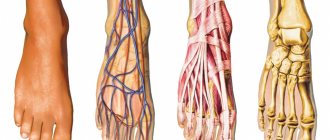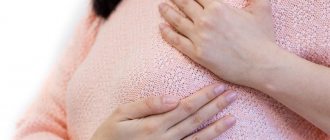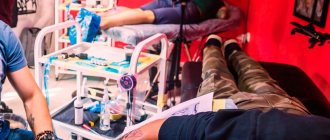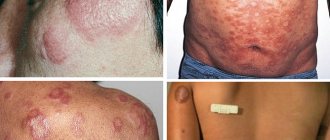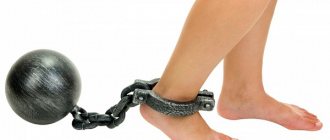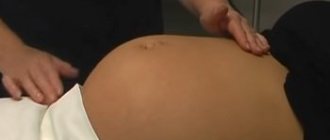What do joints complain about?
One of the main reasons for cracking in the joints is wear and tear of the cartilage. Throughout life, the human body changes and is subjected to various stresses: during physical labor or sports, during pregnancy. The body grows, which means its mass increases, and accordingly, the pressure on the bones and their joints increases. Considering that constant friction during movement is added to this, it is natural that the cartilage tissue gradually becomes thinner, as a result of which the corresponding sounds appear. Other causes of creaking in joints include:
- Air bubbles. The place of their appearance is synovial fluid. Periodically, under the influence of pressure during movement, the bubbles explode. This process is accompanied by a crunch.
- Dehydration. Lack of water in the body negatively affects the joint capsule. It dries out, that is, the joints simply lack lubrication. And in this state, “dry” friction of the surfaces occurs, which can accelerate their wear.
- Physical activity without preliminary preparation, that is, without stretching and warming up. In this case, not only clicks are heard, but pain is also felt.
- Infections that provoke intense removal of water from the body. In addition to the fact that the disease causes a condition typical of dehydration, the risk of infection of the joint capsule also increases, and this is already dangerous.
- Sudden movements in the joints. In this case, the sound occurs as a result of direct contact of the ligaments with the bone.
- Increased mobility, which is normal for adolescents between 16 and 18 years of age. Gradually, as the maturation process completes, the joints will become less mobile.
- Inflammatory processes and diseases arising from this. Then the sound acts as a symptom of incipient arthritis, bursitis or tendinitis.
- Arthrosis, which affects the cartilage of the fingers, elbows and knees.
- Injuries. Because of them, microcracks appear, and a meniscus rupture is also possible.
- Salt deposits. Salts gradually fill the periarticular bursa. Over time, they cause irritation and inflammation on the articular surfaces.
- Changes in the location of ligaments and tendons. Because of this, the shape of the cartilage is deformed.
- Heredity.
- Unbalanced diet.
- Unfavorable environmental conditions.
- Bad habits.
- Excess protein in the diet. Many athletes make this mistake. They forget that protein dries up synovial fluid.
- Lack of movement. With a sedentary lifestyle, the rate of blood circulation decreases and the volume of protein in the body increases.
- Hip dysplasia, which is periodically detected in children. This is a hip dislocation. It is most often diagnosed in infants, but the pathology also occurs in adolescents during the period when the musculoskeletal system is developing.
Another reason why joints click is that they are simply jammed. This also happens. A one-time failure often passes without consequences. But whether this is so, or whether there are still problems, is impossible to understand on your own. You need to see a doctor.
Clarifying the diagnosis by sound localization: when joints hurt and crack, the first thing to do is to determine where exactly it is bothering you, where the sound is coming from. The accuracy of the diagnosis depends on this.
If bones crunch all over your body, the reasons can be very different. For example, based on the results of the examination, the patient may be diagnosed with salt deposits, metabolic disorders, or hormonal imbalance.
Treatment is prescribed only after the cause of the cracking joints throughout the body has been reliably established. Perhaps you just need to adjust the therapeutic regimen that was prescribed to treat the existing disease. Joint problems occur due to the use of glucocorticoids and hormones. Sometimes it turns out that to normalize the condition, it is enough to saturate the body with calcium, trace elements and vitamins.
Diet food
During the entire course of therapy, the patient will have to adhere to a special diet prescribed by the doctor. Dietary nutrition involves increasing the consumption of foods containing calcium, for example, dairy products. In addition, regular consumption of low-fat fish is recommended - it also benefits bone tissue and cartilage. An important role is played by the consumption of such products from childhood, while the development of the body continues.
If you experience crunching in your knees, you will have to eliminate all kinds of sauces, preservatives, marinades and table salt from your diet. It is necessary to limit the consumption of sweets; it is better to include fresh fruits and vegetables in the diet instead of confectionery.
If you have a crunch in your shoulder
Why does a person's bones crunch in the forearm area? Due to lack of calcium and water, due to weakness of the ligaments and the body as a whole. If this is the cause of the problem, then the crunch will be heard only when the patient raises his arms up or spreads them in different directions.
If your bones often crack during normal movement, it may be due to age-related deformities or excessive physical activity or overexertion.
But, if there was a previous injury, the sound may indicate the development of complications. If, in addition to crunching, you are worried about pain, you need to be examined to rule out arthrosis, osteoarthritis, arthritis, and rheumatism.
Surgical treatment
Surgical intervention for creaking knees is recommended only in situations where it is not possible to get rid of the problem using conservative methods.
In such a situation, the following is indicated:
- arthrotomy of the knee joint;
- arthroplasty
- punctures to determine the pathology and goal of therapy;
- tenorrhaphy
- meniscectomy
- arthroscopy
- synovectomy
- osteosynthesis
Typically, surgery is performed on patients who have the following problems:
- there is a foreign object in the joint cavity;
- received a fracture;
- you need to replace the knee joint with a prosthesis;
- ligamentous tissue is torn;
- damaged meniscus;
- diagnosed with rheumatoid arthritis that is not amenable to drug therapy;
- Hematomas do not heal well, which requires removal of the pathological contents.
When your knees creak
If your knee joints crunch when walking, then it’s time to take care of them. All their lives they are exposed to serious stress, from the fact that they hold the weight of almost the entire body, ending with overloads during active movements (running, jumping). The knees are one of the most vulnerable parts of the skeleton.
When all the joints of the legs click and crunch, at best, the cause of the pathology lies in wearing incorrectly selected shoes or being overweight. Shoes can be changed and weight can be reduced. It's worse if the problem is salt deposits. Although in this case, at the initial stage, you can still improve your health by adjusting your diet.
If the joint is very crunchy in only one knee, they look for damage to the bones or cartilage tissue. If pain is added to this symptom, the patient is checked for the presence of flat feet or osteophyte. Obesity can also trigger this problem.
In cases where, in addition to the indicated symptoms, swelling appears, you need to make sure that the inflammatory process has not begun. If you miss it, rheumatism, chondromatosis, bursitis or tendonitis may develop over time.
Clicking in the hip joint
Athletes and dancers, people engaged in physical labor, often hear their hip joints crunching. The sound occurs when the tendons come into contact with bone tissue during movement. But the problem also arises from dehydration or excess protein. In such cases, doctors will look for arthritis, arthrosis or other inflammatory processes.
Crunching in the hands
Those who have a habit of cracking their fingers should forget about it as soon as possible. A crunch initially indicates the presence of pathology. If you continue in the same spirit, you can injure the joint or damage the periarticular tissue. Sometimes inflammation even develops. The latter is especially dangerous, since the inflammatory process from the fingers will quickly spread up the arms. The more joints that make the sound, the worse it is.
Massage
Performing a massage helps to activate blood circulation and improve mobility in the knee joint. Moreover, you can massage the injured knee either yourself or by contacting a specialist.
If you decide to engage in self-massage, you should follow these rules:
1. Use ointments, for example, containing bee venom.
2. You need to massage your knee lightly and carefully, without using force.
3. Squeeze a small amount of ointment onto the knee area and rub it in using gentle movements in a circle.
4. The product should be smeared on both the front and back areas of the knee joint.
5. At the end of the procedure, it is recommended to wrap the knee with an elastic bandage.
6. The optimal time for massage is at night. At this time, the leg warms up better and remains at rest for a long time.
Diagnostics
If your joints are cracking, then a therapist will help you determine which doctor to see. He will cure some diseases himself. If the therapist suspects diseases of the joints or connective tissues, he will refer you to a rheumatologist. If there is a history of trauma, he will advise you to consult a traumatologist.
During the appointment, the doctor interviews the patient and examines him. The specialist checks how mobile the joint is and whether it is very bothersome. The doctor calculates BMI through the ratio of the patient’s height and weight, and is interested in his diet and physical activity.
Treatment of the spine and joints always begins with a thorough examination. Sometimes it turns out that the crunching was caused by latent diseases. To figure out why all the joints began to crunch, the following is prescribed:
- general or biochemical blood test;
- general urine analysis;
- Ultrasound;
- radiography;
- CT;
- MRI;
- puncture.
A blood test helps identify the presence of inflammation. The composition of urine determines the excess of salts and protein. Uric acid levels will help detect gout. If autoimmune diseases are suspected, an analysis is taken for antibodies to one's own cells, as well as for specific markers of inflammation.
Using ultrasound, the structure of the joint and its functionality are studied, and using x-rays, pathological changes and traumatic damage to bones and surrounding tissues are detected. The puncture allows you to perform microscopic and bacteriological examinations of the intra-articular fluid.
ethnoscience
To speed up the recovery process in damaged cartilage, you can use alternative medicine. Folk remedies help relieve symptoms associated with crunching in the knee joints.
Let's take a look at some recipes:
- Oatmeal compresses. Oatmeal in the amount of 1 tbsp. Fill a spoon with a glass of hot water and apply the prepared mixture to the affected area. You need to make sure that the compress remains warm. The duration of the procedure is approximately half an hour.
- Pine decoction. Take 1 spruce cone, fill it with clean water in a volume of 200 ml, and infuse overnight. The finished infusion should be taken orally twice a day, 1 tbsp. spoon. Duration of admission – 10 days.
- Lemon lotion. Mix lemon juice (10 grams) and vegetable oil (50 grams). We moisten a piece of clean cloth with the resulting mixture and apply it to the damaged knee, leaving for 40 minutes.
- Decoction with parsley. Mix parsley with celery root in a container. Pour 500 ml of boiling water over the resulting mixture and cook for 5 minutes. After removing from the stove, cool and strain, then add honey (2 tablespoons) and lemon juice. We take the finished product daily for 30 days, 5 sips. Then we take a break and repeat the therapeutic course if necessary.
It is worth noting that the use of folk remedies can only bring results in combination with traditional methods of treatment. Therefore, you should definitely consult your doctor before starting to use such recipes.
How are crackling joints treated?
There are four ways to get rid of crunching in the joints - diet, medication support, physical therapy and manual therapy. Your doctor may recommend one or all of these methods.
Diet
Patients are prescribed a low-carbohydrate diet. It is advisable to forget about baked goods and sweets, carbonated drinks and potatoes. You should even give up sweet fruits. There are quite enough carbohydrates in porridges and whole grain breads.
You need to eat meat with veins, jellied meat, and dishes that contain gelatin. But an excess of animal fats should not be allowed. It is necessary to get into the habit of eating apples and seaweed, fish and seafood. To prevent dehydration, it is important to drink at least 2.5 liters of clean water or unsweetened tea every day.
Medicines
When joints click, the doctor decides how to treat the disease, taking into account the root cause of the pathology. Inflammation is relieved with non-steroidal anti-inflammatory drugs. Then the patient is offered to use Diclofenac, Meloxicam, Nimesulide, Ibuprofen, Naproxen, Indomethacin or Ketoprofen. If the situation is stalemate, steroid drugs are prescribed. The dosage of Prednisolone or Methotrexate is determined by your doctor.
If you need to replenish fluid in the body, medications containing hyaluronic acid are prescribed. To restore cartilage tissue, chondroprotectors are taken. The course of treatment lasts 3–6 months, so it is worth stocking up on Artracam, Artradol or Structum in advance.
Physiotherapy
For joint diseases, the use of physiotherapeutic methods is allowed both in the acute period and during remission. With the help of physiotherapy, inflammation is relieved and medications penetrate directly into the tissues. As a result of the use of physiotherapy, blood supply improves and metabolic processes are normalized.
Patients are often prescribed exercise therapy, electrophoresis with drugs, magnetic therapy, and reflexology. Paraffin therapy, UHF and amplipulse help well. If possible, provide mud therapy.
It is advisable to visit a rehabilitation specialist. He will select the optimal training regimen and tell you what is best to do for a specific diagnosis: therapeutic exercises or swimming, cycling or sculpting. If necessary, a rehabilitation specialist will help with choosing an orthosis.
Manual techniques
Patients are prescribed massage sessions (therapeutic, restorative or relaxing). According to indications, pneumomassage, lymphatic drainage and kinesiotherapy are recommended.
Drug treatment
The selection of medications depends on what exactly caused the crunch in the knees. In this case, treatment with the following drugs may be prescribed:
- complex vitamin preparations containing phosphorus and calcium;
- corticosteroids containing hormonal substances;
- external medications to relieve pain and restore motor activity in the damaged joint;
- chondroprotectors in the form of capsules or ointments to strengthen cartilage tissue;
- anti-inflammatory drugs, the purpose of which is to relieve pain and inflammation. Such signs appear as concomitant symptoms against the background of crunching in the knees (drugs in this group are usually prescribed to patients with arthritis).
Which medications and in what dosage the patient should take is decided by the doctor after conducting appropriate research. Certain groups of drugs are potent drugs, especially hormone-containing drugs. Their use without medical advice is prohibited.
Specialists of the direction
Artem Naumenko
Expert in the treatment of knee injuries and back pain. Work experience 14 years
Oleg Loskutov
President of the Association of Foot Surgery, expert in the field of foot surgery and endoprosthetics. Work experience 14 years
Artem Naumenko
Expert in the treatment of knee injuries and back pain. Work experience 13 years
Oleg Loskutov
President of the Association of Foot Surgery, expert in the field of foot surgery and endoprosthetics. Work experience 14 years

